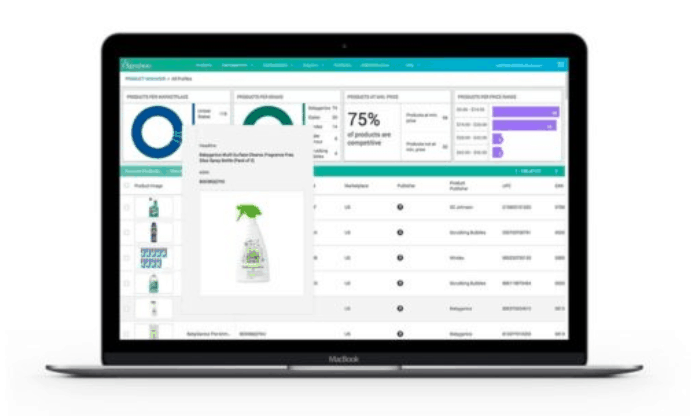Many companies are hearing the term “omnichannel” as an emerging buzzword and think it’s something they should be doing — and it is. But with so many phrases and strategies taking shape in the marketing world every day, it can be challenging to truly understand what omnichannel marketing means and how to execute a real, successful omnichannel marketing strategy.
We’re here to clear things up. Let’s explore what real omnichannel marketing is, why it’s important for brands, and how to craft and execute a successful omnichannel marketing strategy.
What Is Omnichannel Marketing?
The term “omnichannel” in marketing refers to a customer-centric focus on all marketing channels, whether it’s a physical store, a mobile app, or the web. For marketing and advertising, this can refer to direct mail, billboards, search, email, organic social, and paid campaigns.
Since there are so many different platforms and channels to address through omnichannel marketing, implementing an omnichannel strategy can take different forms for every brand. Some examples of omnichannel marketing include:
- Texting or SMS messaging about a daily special or coupon
- Sending an email after items have been added to an online cart
- Retargeting on Facebook after a customer clicks on a paid search ad
- Targeting lookalike audiences through a sponsored Instagram post
- Augmenting an in store experience with special offers in an app
Omnichannel vs. Multichannel
The terms “omnichannel” and “multichannel” are often used interchangeably, but there are important distinctions between the two and what they mean for your marketing strategy. The key difference is that multichannel marketing includes a limited selection of content channels, while omnichannel marketing includes all of them.
By definition, multichannel means “many channels,” and omnichannel means “all channels.” Think of omnichannel marketing as covering your entire customer journey, inclusive of every platform your customers utilize, but multichannel marketing as narrowing down on a specific piece of the customer journey from one point to another.
In addition, multichannel marketing often focuses more on engagement within the different channels, while omnichannel marketing focuses on comprehension and a seamless experience for your customers. Each has its benefits, but omnichannel marketing is the right choice for a brand trying to create a more integrated customer experience.
The Benefits of Omnichannel Marketing
Omnichannel marketing helps combat all these factors by connecting with customers wherever they are and providing high-quality customer data, increasing marketability and predictability.
“Certain macroeconomic factors, like a pandemic-induced acceleration in digital shopping and advertising and data privacy regulations making marketing measurement more opaque, have increased competition in many categories and generated less predictable customer relationships,” says Skai CMO Margo Kahnrose said on the omnichannel marketing thought leadership site, The Breakthrough.
Improve customer lifetime value
An omnichannel experience puts the customer first, and it’s no wonder that customers want to stay with businesses that put them in the driver’s seat. It’s also not surprising that retail leaders see long-term goals as being critically important. A Coresight report shows that 53% of leading European retailers state that improving lifetime customer value is a reason for implementing an omnichannel strategy. In comparison, only 34% of other retailers feel the same.
Reach new customer segments
Different groups of customers shop differently, which includes using different platforms and channels to explore and discover brands. An omnichannel strategy benefits businesses by enabling them to reach new customer segments. Tapping into those new channels creates a path for new customer segments to discover and enjoy your brand. While this benefit is nearly equally important to both leading retailers and ‘others’ (48% vs. 45%), both numbers should be higher, as reaching new customers is a key to growth.
Increase operational efficiency
While an omnichannel strategy may seem more challenging and complicated to implement, businesses actually experience increased operational efficiency. With an omnichannel strategy, businesses only need to collect a customer’s data once rather than at every touchpoint. This empowers brands to market more efficiently on every platform. By developing a holistic overview of the data and platforms, companies don’t need to worry about creating and implementing strategies for every channel; they can easily repurpose content for every channel while making targeted platform-specific personalizations.
Increase sales
Increasing sales is an essential benefit for retailers that need a revenue boost. A Harvard Business Review study showed that omnichannel customers spend 10% more online than single-channel consumers. This is one area, though, that leading retailers (42%) aren’t as focussed on as others (57%). Omnichannel is clearly an opportunity for brands not quite solidified as major retailers to drive revenue, increase brand awareness, and create a firm foothold in their markets.
Omnichannel Marketing Examples
Having a sense of how omnichannel marketing works is one thing, but putting it into practice and seeing real results is entirely another. See how these brands maximized the omnichannel marketing experience for their customers and drove tangible results.
Best Buy
Best Buy typically focuses on commerce (both in-store and online), but boosted its in-store experience by creating offerings for customers to explore smart home-technology solutions, pairing them with free in-home advisory services. The company’s mobile app also lets customers “scan to shop” from catalogs and curbside or buy online and pick up merchandise in the store itself, smoothing the end-to-end journey for customers with the 24/7 tech support from its Geek Squad. This “Totaltech” support offer has been compelling to customers, having launched with 200,000 memberships in 2018 and increasing to 2 million within a year.
Sephora
Beauty retailer Sephora emphasizes omnichannel personalization, relying on rich in-app messaging, personalized push notifications, and easy ways for customers to book in-person consultations. The company’s in-store technology, paired with the loyalty program, is a powerful complement that allows employees to access customer favorites and suggest products they might try next. This strategy drives major value for Sephora: data showed that customers visiting the retail website within 24 hours of visiting a store were three times more likely to make a purchase, and order expenses were 13% higher than for other customers.
Nike
Nike takes an ecosystem view of omnichannel, extending the brand experience and offering customers an ever-growing platform of content, offers, and community interactions. Two of the company’s apps, SNKRS and Run Club, facilitate in-person meetups, running groups, and events. The Nike+ app, available for both smartphones and smartwatches, also delivers individual workouts and fitness programs, creating experiences that go far beyond shoe and apparel lines to meet customers in their day-to-day routines. An omnichannel strategy of this magnitude not only meets customers in the online places they shop, but it engrains the Nike brand in every part of their daily lives.
What Is An Omnichannel Marketing Strategy — And How Do You Create One?
“Consumer buying behavior has changed drastically,” says Nicole Ciccone, Senior Strategist at Tinuiti, “And brands need to be prepared to handle these quick shifts, not just on a website homepage but also through mobile sites/apps, email communications, in-store messaging, digital marketing efforts, and more.” With this in mind, your brand’s omnichannel marketing needs to be strategic enough to address your unique audiences yet agile enough to change with the speed of your customers’ minds.
1. Place ads across channels
Keep in lockstep with your customer base wherever they’re browsing, with the interaction type that matches their mindset. With customer data for every platform, you can advantage of the highest-conversion ad formats that contribute directly to sales on every media channel:
- Product Catalog Sales
- Dynamic Product Ads
- Smart Shopping
- Product Listing Ads
- Instant Experience
2. Be smart with creative
Pay attention to underperforming, stagnant, or fatigued ads so no budget goes to waste and no crucial impressions are made in vain. Monitor consumer sentiment in response to your creative so you can easily pause ads with negative sentiment and boost the ones that are best received.
3. Personalize with data
Visibility into which aspects of your creative, including color, text, images, and more, are truly driving impact can be achieved down to the attribute level. Granular omnichannel data can also be utilized to deliver personalized content to audience segments.
4. Expand audience reach
By targeting both paid search and paid social audiences on all channels, you can build a wider network that helps expand the customer segments your brand reaches. Identify conversion-based lookalikes to find new potential customers based on your highest-expectation profiles. In addition, consider third-party audience integrations within your marketing tech stack to build new cohorts and deeper targeting.
5. Automate manual tasks
An omnichannel marketing strategy requires a new mindset of efficiency, and automation plays a key role. Use automated responses and actions to keep processes moving and guide customers through the funnel. Base rules on various product-related criteria that are most relevant to your offerings and what the customer is looking for, such as product catalog, category, name, and product set. Automating manual, time-consuming tasks frees up more time for value-added creative strategizing for your team to truly influence the minds of your ideal customers.
6. Optimize budgets
Creating an omnichannel marketing strategy means taking a much more holistic approach to budget, and the ability to step back and see the big picture is critical. Use an omnichannel marketing-specific budgeting tool to help you accurately predict your spending across channels to ensure you are driving growth and planning ahead for heavy shopping days to boost budgets around key promotion periods and seasonality.
7. Integrate an omnichannel marketing platform
Only Skai™ powers shoppable advertising inventory across retail media, search engines, social media, and app stores in a unified platform with critical connections between them, so you can bring relevant audiences from awareness to research to purchase in one click.
What is Omnichannel Attribution?
Omnichannel attribution is an advanced approach to marketing analytics, focusing on understanding and crediting the value of each touchpoint across all channels in a customer’s journey toward a conversion. Unlike traditional models that may overemphasize the role of the last click or interaction before a sale, omnichannel attribution seeks to distribute credit more accurately among all interactions—be it through social media, email campaigns, direct searches, or offline efforts such as in-store visits. This methodology provides businesses with a more holistic view of consumer behavior and the effectiveness of different marketing strategies. By leveraging data from various sources and employing complex algorithms, omnichannel attribution helps marketers refine their strategies, allocate budgets more efficiently, and ultimately enhance the customer experience by delivering more personalized messaging and interactions.
What is Omnichannel Personalization?
Omnichannel personalization is a strategic approach in marketing and customer experience management that provides a cohesive, personalized interaction across all channels and touchpoints of a customer’s journey. It goes beyond traditional personalization methods by integrating and leveraging data from various sources—such as online behavior, purchase history, and customer preferences—to deliver tailored messages, offers, and experiences to each individual, no matter how they engage with a brand. Whether a customer is shopping online from a desktop or mobile device, via a mobile app, or in a physical store, omnichannel personalization ensures that their experience is consistent, relevant, and aligned with their interests and past interactions. This approach not only improves customer satisfaction and loyalty but also boosts conversion rates and sales by delivering the right message to the right person at the right time across all channels.
Skai: Media that matters. Omnichannel marketing that works.
Consumers have spoken: They prefer being marketed to on walled garden channels like retail media, search engines, social media, and app stores. And marketers have spoken: They need accountability for every dollar spent. That’s why we focus on the most effective ad channels for both sides of the equation and bring them together for you.
Skai is the only omnichannel marketing platform for performance advertising. We’re helping marketers connect the walled gardens across retail media, paid search, paid social, and app marketing, making true omnichannel performance marketing a reality.
To learn more about omnichannel marketing and hear fresh insights from industry experts, request a personalized demo with Skai and sign up for our omnichannel resource hub, The Breakthrough.






